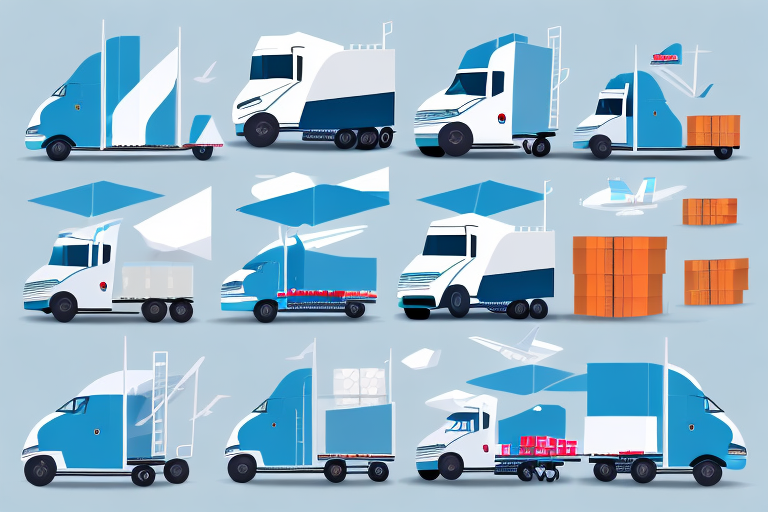Traditional Postal Services for Package Delivery
The traditional postal service has a history spanning over 200 years and continues to be a reliable option for package delivery. With extensive delivery routes and cost-effective pricing, postal services remain a staple for both individuals and businesses.
Advantages of Traditional Postal Services
- Cost-Effective: Generally more affordable, especially for standard and bulk shipments.
- Wide Network: Extensive delivery routes covering both urban and rural areas.
- Additional Services: Options like signature confirmation and PO box delivery.
Disadvantages and Limitations
- Speed: Slower delivery times compared to private carriers, often taking several days.
- Tracking and Insurance: Limited tracking capabilities and insurance options.
- Potential Delays: Higher chances of delays or lost packages due to volume.
Reliability and Reputation
Traditional postal services are often trusted for their reliability and long-standing reputation. According to the USPS FAQs, the service handles millions of packages annually, ensuring consistent delivery standards.
Express Delivery Options: Same-Day and Next-Day Services
For urgent or time-sensitive deliveries, express options like same-day and next-day services offer faster transit times. These services cater to both consumers and businesses that require expedited shipping solutions.
Retailer-Provided Same-Day Delivery
Many retailers now offer same-day delivery for an additional fee or as a perk for large orders. This service is convenient for customers who need products immediately after purchase.
Crowdsourced Delivery Services
Platforms like TaskRabbit and Deliv provide crowdsourced delivery options, allowing individuals to deliver packages on demand.
Cost and Availability Considerations
Express delivery services can be significantly more expensive than standard shipping options. Additionally, availability may be limited to certain geographic areas, making it essential to verify service coverage before choosing this option.
Major Package Carriers: FedEx, UPS, DHL, and USPS - Cost Comparison
When selecting a package delivery service, comparing the offerings of major carriers like FedEx, UPS, DHL, and USPS is crucial to determine the best fit for your shipping needs.
Service Offerings and Reliability
- FedEx: Known for reliable overnight shipping and comprehensive tracking services. FedEx Services
- UPS: Offers a wide range of shipping options with strong international presence. UPS Services
- DHL: Specializes in international shipping with extensive global networks. DHL Services
- USPS: Best for cost-effective domestic shipping with options like Priority Mail. USPS Services
Pricing Structures and Discounts
Shipping costs vary based on package size, weight, and destination. Major carriers often offer discounts for businesses and frequent shippers. For instance, FedEx Business Solutions provides tailored pricing for bulk shipments.
International Shipping Costs
International shipping can be more expensive due to additional services like customs clearance. DHL and FedEx are typically more competitive for international deliveries, while USPS offers affordable options for certain countries.
Selecting the Best Package Delivery Service for Business Needs
Choosing the right package delivery service is vital for businesses to ensure timely and efficient delivery of products to customers. Several factors need consideration to make an informed decision.
Factors to Consider: Size, Weight, and Speed
- Package Specifications: Determine the typical size and weight of your shipments to choose a carrier that accommodates your needs.
- Delivery Speed: Assess the urgency of deliveries to select appropriate shipping options, whether standard or expedited.
Customer Service and Support
Effective customer service is essential for resolving issues like delays or lost packages. Evaluate the support options offered by carriers, such as dedicated account managers or 24/7 customer service.
Cost vs. Service Level
While lower costs are attractive, it's important to balance them against the level of service provided. Investing in reliable carriers can reduce the risk of lost or damaged packages, ultimately saving costs in the long run.
International Package Delivery: Regulations and Best Practices
Shipping packages internationally involves navigating various regulations and best practices to ensure smooth delivery across borders.
Understanding Customs Regulations
Each country has its own customs regulations that dictate what can be shipped and the necessary documentation. Failing to comply can result in delays or additional fees. Refer to resources like the U.S. Customs and Border Protection for guidelines.
Packaging for International Shipping
Using sturdy and secure packaging is crucial for international shipments. Ensuring that items are well-protected can prevent damage during transit across different handling processes.
Handling Taxes and Duties
International shipments may be subject to import taxes and duties. It's important to clearly declare the value and contents of the package to avoid unexpected costs for the recipient.
Packaging and Handling: Ensuring Safe and Timely Deliveries
Proper packaging and handling are fundamental to the safe and timely delivery of packages. Effective packaging minimizes the risk of damage and loss during transit.
Choosing the Right Packaging Materials
- Sturdy Boxes: Use durable boxes that can withstand handling and transportation stresses.
- Packing Materials: Include bubble wrap, foam, or packing peanuts to protect the contents.
Labeling and Documentation
Clear and accurate labeling helps ensure packages are delivered to the correct destination. Include essential information like the recipient's address, return address, and any necessary handling instructions.
Tips for Shipping Fragile Items
- Extra Padding: Use additional padding materials around fragile items.
- Fragile Labels: Clearly mark packages as "Fragile" to prompt careful handling.
- Insurance: Opt for insurance to cover potential damages during transit.
Innovations and Future Trends in Package Delivery
The package delivery industry is rapidly evolving with technological advancements and changing consumer expectations. Staying informed about these trends can help businesses and consumers leverage new opportunities for efficient shipping.
Delivery Drones and Autonomous Vehicles
Innovations like delivery drones and autonomous vehicles are revolutionizing last-mile delivery by reducing delivery times and operational costs. Companies like Amazon are piloting drone delivery services to enhance efficiency.
Sustainable Delivery Practices
Environmental sustainability is becoming a priority, with many carriers adopting electric vehicles and eco-friendly packaging solutions. For example, Amazon's Climate Pledge aims to make all shipments net-zero carbon by 2040.
Enhanced Tracking and Communication Tools
Advanced tracking systems provide real-time updates, increasing transparency and improving customer satisfaction. Enhanced communication tools allow customers to receive notifications and manage their delivery preferences effectively.
Personalization and Customization
Future delivery services are expected to offer more personalized options, allowing customers to tailor delivery times, locations, and methods to suit their specific needs.
Conclusion
Whether you're shipping domestically or internationally, selecting the right package delivery service involves assessing various factors including cost, speed, reliability, and service offerings. By understanding the pros and cons of traditional postal services, exploring express delivery options, comparing major carriers, and considering innovations in the industry, you can make informed decisions that meet your specific shipping needs. Proper packaging and adherence to best practices further ensure that your packages arrive safely and on time. As the delivery landscape continues to evolve, staying abreast of the latest trends and technologies will help you optimize your shipping processes for efficiency and sustainability.








